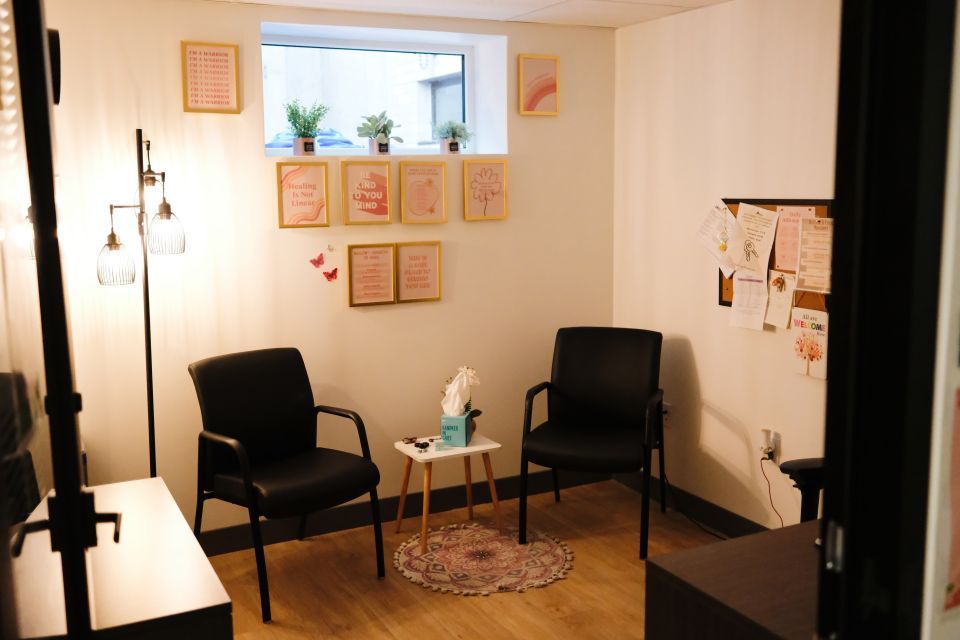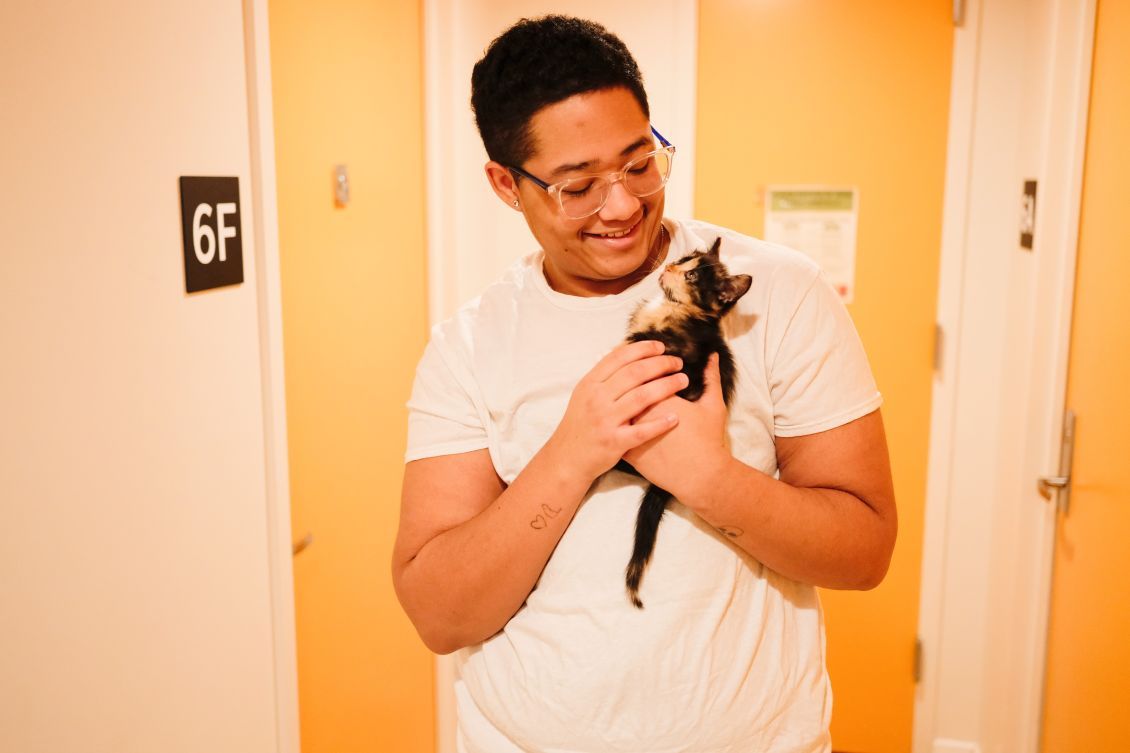Noah Bornheimer grew up in Harlem but rarely felt at home.
As a young person in Brooklyn, Lo Herrera often felt uncomfortable and even unsafe.
Bornheimer, 20, and Herrera, 23, each moved recently to their own spacious, light-filled studio apartments, where for the first time, they say, they can relax. The two are among the first of 50 residents at Homeward Central Harlem, a supportive housing development in Harlem with services for LGBTQ+ young adults.
“I feel safe and comfortable in a way I never have before,” said Bornheimer. “I have time to breathe.”
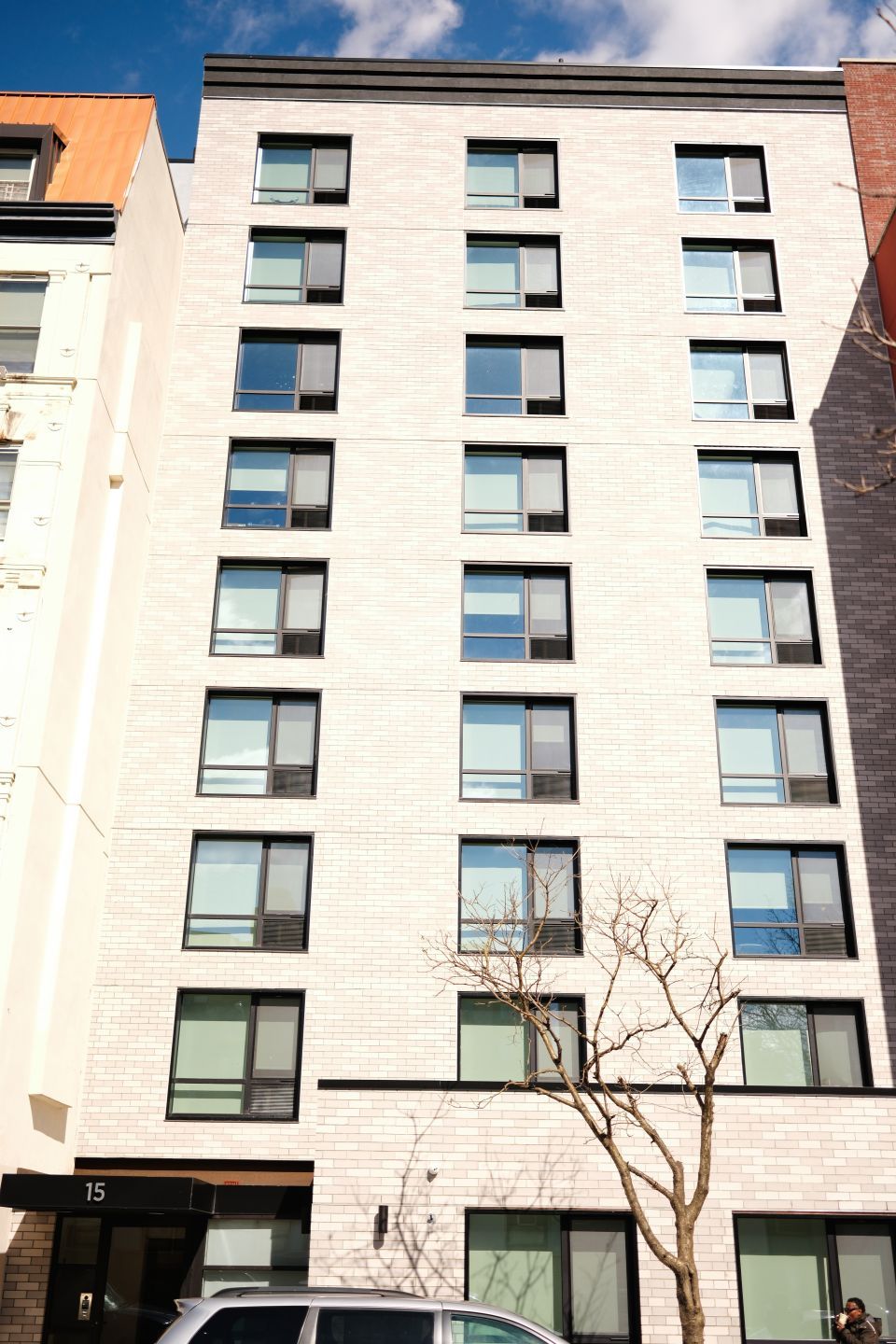
Homeward Central Harlem, which opened its doors in late 2023, is the nonprofit Homeward NYC’s third supportive housing development tailored to LGBTQ+ young adults between the ages of 18 and 25. The compact and modern nine-story building, sandwiched between two larger apartment buildings on a quiet street, includes 50 studio apartments as well as common gathering spaces with brightly colored furniture and accent walls. Staff provide services ranging from mental health counseling to job search training. Homeward Central Harlem also offers something less tangible: A place to recover, breathe, and chart a fresh start.
“The need for supportive housing for the most vulnerable is critical in New York City,” said Jeannette Ruffins, CEO of Homeward NYC. “For LGBTQ+ young adults, the need is large and it’s growing.”
Disproportionate Risk
In New York City, around 1,000 young adults age out of foster care each year, and about 20% of them become immediately homeless. LGBTQ+ young people are at a disproportionate risk of homelessness: Around 28% experience homelessness or housing instability during their lives, according to the Trevor Project’s 2021 National Survey. And in New York City, 40% of the city’s homeless youth population identifies at LGBTQ+.
Nationally, an estimated 34,147 young adults aged 18-24 live alone and unhoused in the U.S., according to the most recent Point-in-Time count, a number that many advocates warn may be low – homeless children and youth are notoriously undercounted.
“We’re seeing that these young people are often rejected by family because of their sexual orientation or gender identity,” Ruffins said. “When your family tells you that who you are is fundamentally wrong, it can fracture your identity and your sense of safety.”
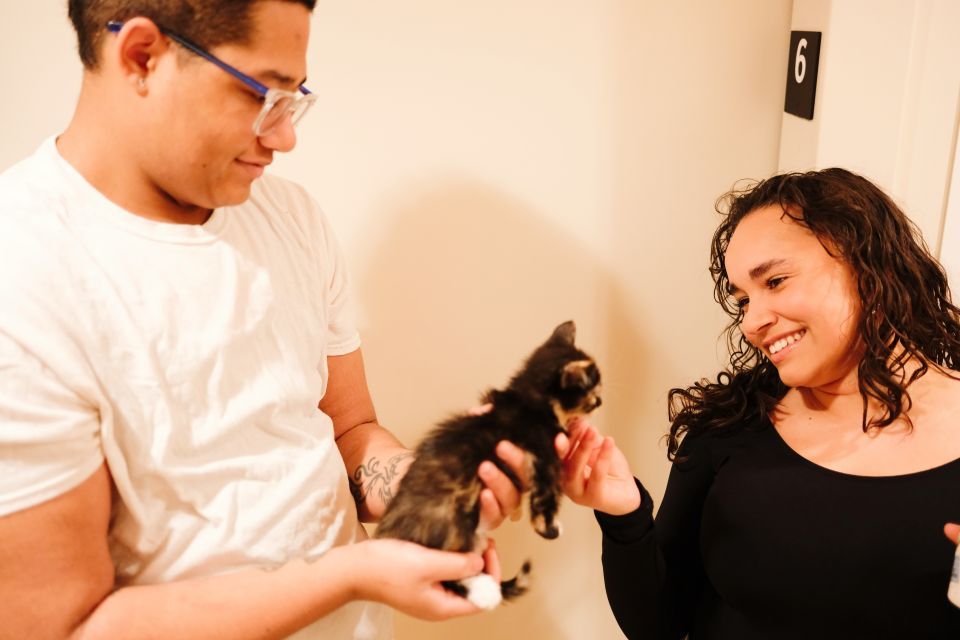
A Vision and a Model
On a recent morning at Homeward Central Harlem, a security guard sits just inside the front door. Downstairs, Lo Herrera displays a sketchbook filled with their colorful fantasy style drawings with staff, who crowd around a front desk welcome area that leads to offices and small gathering spaces. Although the building is fully leased, the atmosphere is quiet, punctuated with a few additional friendly greetings between residents and staff.
Residents like Herrera and Bornheimer are referred by the NYC Department of Homeless Services, the Department of Youth and Community Development's Runaway & Homeless Youth program, and the Administration for Children's Services Foster Care. Homeward Central Harlem’s apartments are available exclusively to young adults ages 18 to 25 who earn less than 50% of the area median income and want to live in a building that is affirming for LGBTQ+ persons. Housing is non-time limited, meaning residents do not age out on their 26th birthday.
Homeward NYC provides on-site supportive services such as counseling, case management for residents to access financial and health care benefits, connections to community resources, group activities, and skills-building programs. “We had a vision to create a supportive housing site for LGBTQ+ young adults in every borough of the city. It’s a great model,” Ruffins said, noting that the original project partnered with singer and LGBTQ+ advocate Cyndi Lauper. Homeward Central Harlem is Homeward NYC’s third supportive housing development tailored to LGBTQ+ young people.
In addition to a $1.8 million grant from Enterprise, financing came from the New York State Division of Homes and Community Renewal, the City Department of Housing Preservation and Development, the City Department of Social Services, KeyBank, Hudson Housing, and Freddie Mac Multifamily. Homeward NYC, Type A Projects, and Azimuth Development Group co-developed the residence.
Ruffins stresses the broad need for supportive housing, while also noting that “not all young adults will need supportive housing to avoid or get out of homelessness.” And, given some of the financial challenges to creating 100% supportive housing, future plans could include mixed-use properties that would provide services to some residents.
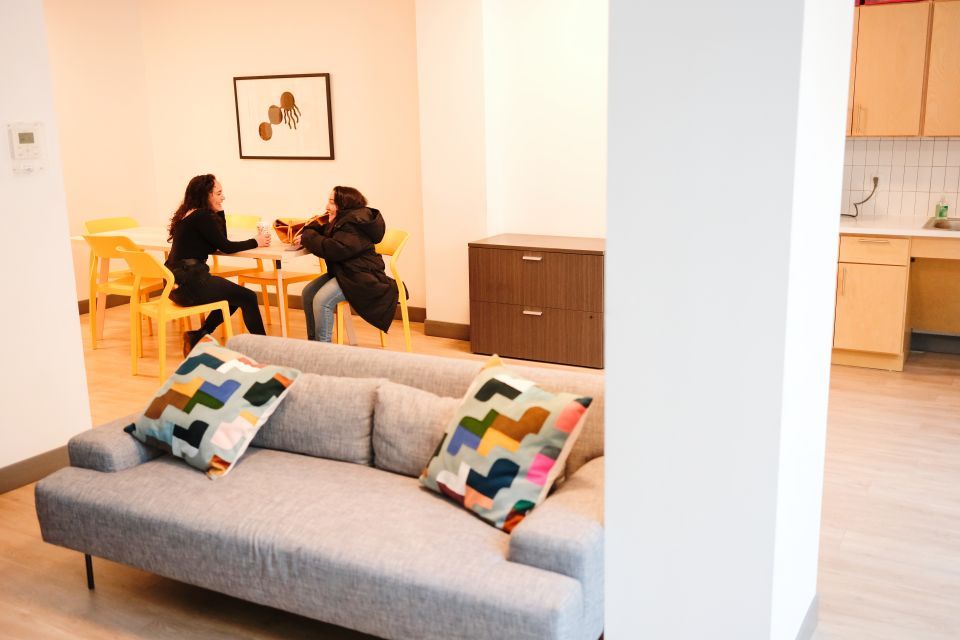
An Ideal Home
For Noah Bornheimer, the apartment they now share with a cat, Titan, is the refuge they have been hoping for. Decorated with colorful posters and cluttered with half-finished art projects and cat toys, the studio looks out on the tree-lined street and across to a swimming pool. “This is the most ideal supportive housing I can imagine because I’m not only getting this place to live, but also help with mental health counseling and with my job search,” Bornheim says while petting Titan.
Bornheimer found themself on the edge of becoming homeless after suffering what they describe as a “mental break” and dropping out of a community college in upstate New York. “I could not return home at that point,” said Bornheimer, who identifies as transgender and is undergoing hormone therapy.
When Bornheim returned to New York City, they ended up staying at the Ali Forney shelter for LGBTQ+ youth, which requires a weekly call to reserve a spot. The sense of stability and safety at Homeward Central Harlem is “one hundred times better,” said Bornheimer, who is optimistic about finding a job with help from staff.
Although it’s only been a few months since moving in, Bornheimer appreciates a “sense of community here,” that has included group movie nights, holiday meals, and gatherings in the shared space just to “hang out and listen to music.”
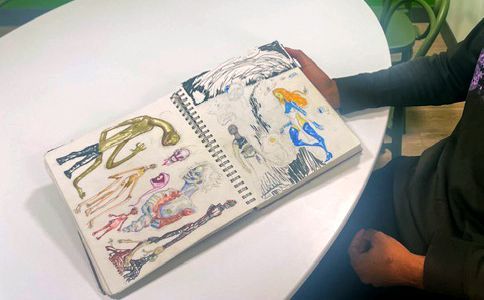
Sense of Safety
Lo Herrera pulls out a sketchbook to share the fantasy style paintings and comics they create based on stories. Before moving to Homeward Central Harlem, Herrera spent some time in a shelter before moving in with an ex-partner in a situation they describe as “extremely unsafe.” At one point, after being continually rejected by landlords despite having a housing voucher, Herrera felt they could end up sleeping on the street.
Herrera, who has a degree in computer science from New York City College of Technology, now teaches after-school art classes to middle-school students and recognizes they will at some point, “get back into a 9-5 job.” For now, Herrera is taking advantage of Homeward Central Harlem’s services to help maneuver city bureaucracy for rental assistance while also focusing on their artwork.
“I experienced so much danger out there. Even when I was just living, just sitting and drawing on the train, people wanted to pick a fight with me because of how I cross my legs or paint my nails,” Herrera said. “Living here is like a refuge and it gives me the calm and the time to get my life together.”
A Stepping Stone to So Much More
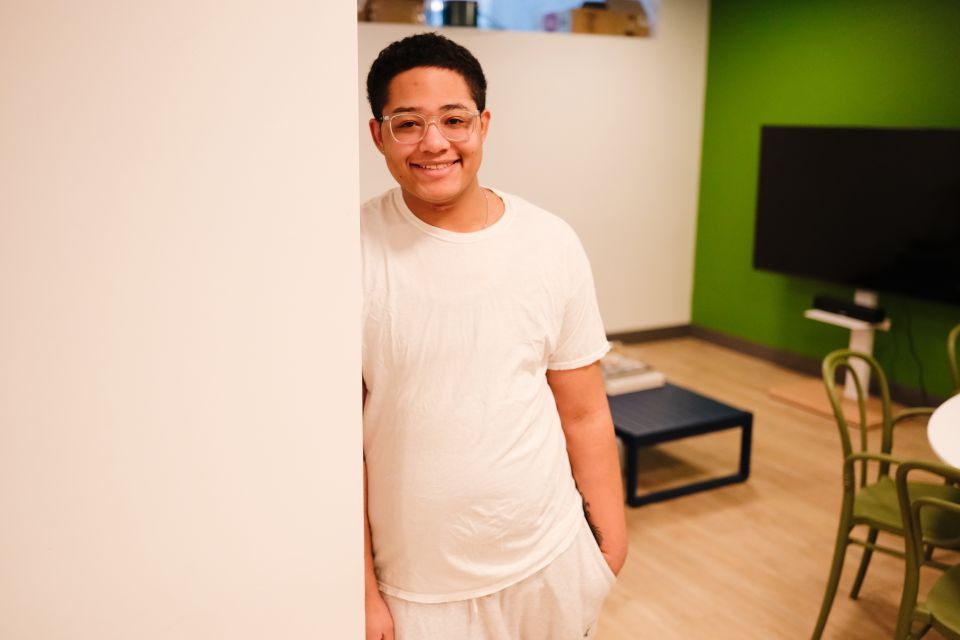
For Mildred Ramirez, director of LGBTQ+ supportive housing, working at Homeward Central Harlem fulfills “a lifelong passion and dream to be able to work in an organization that really does provide services and really is committed to empowering the LGBTQ+ community.”
Ramirez was previously the manager of Homeward West Harlem and has stayed in touch with many of the residents there, even years after they moved out. Speaking of the new residents she’s working with now, Ramirez says it’s inspiring to hear about the challenges these young adults have faced and overcome. “But it’s also going to be an inspiration to see where they go,” she added.
“For most of these young people, this is their first stable apartment, and living here will help them concentrate on the things they need to do to learn how to live on their own,” Ramirez said. “It’s a stepping stone to so much that can come forth in their lives.”
